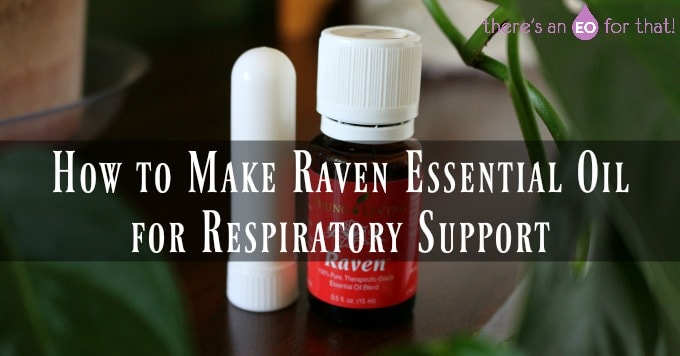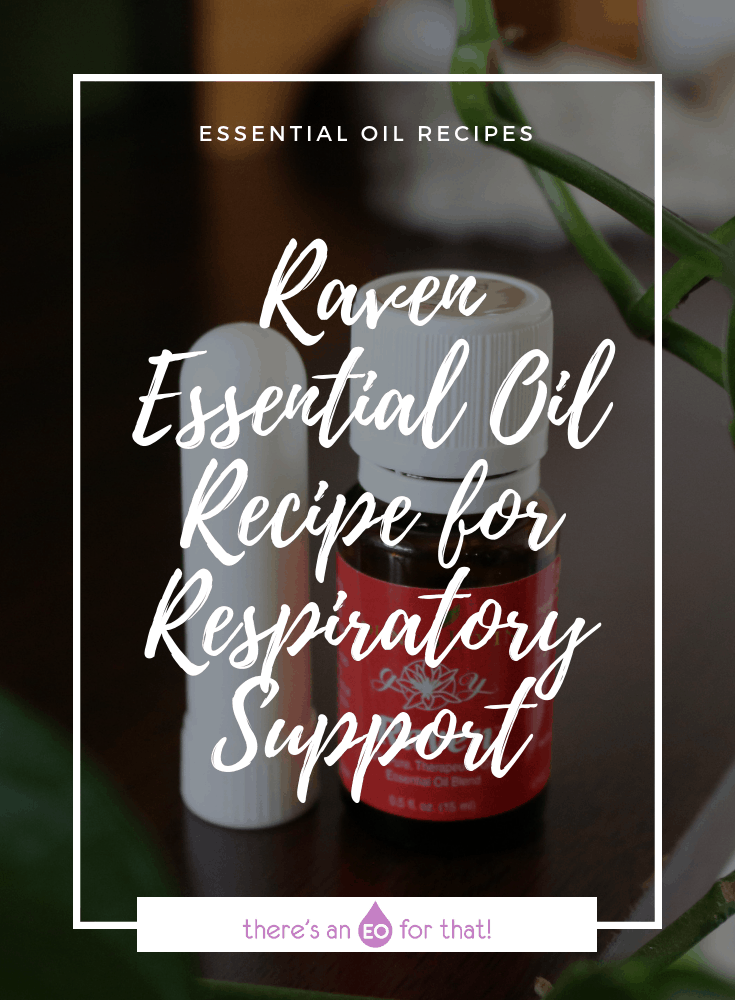
Respiratory illnesses always strike once the weather starts to cool. One moment you're enjoying the aroma of a nice cup of coffee, the next, you can hardly taste or smell your morning cup of joe with all the sinus and lung congestion.
Seasonal germs can easily transfer between person to person as they float through the air around us or spread on surfaces in our environment. As someone who has asthma, it’s really important for me to try and avoid catching respiratory colds as they tend to become quite unpleasant and often last for weeks with little improvement.
One of the ways I help avoid catching the next round of bronchitis, or at least cut its duration, is to use essential oils that have an affinity for the lungs and sinuses, breaking up mucus, and helping the body to drain and expectorate stagnancy in these areas.
One such blend is Raven, a blend by Young Living that contains powerful essential oils known for their potent germ-fighting and clarifying properties.
What Essential Oils Are in Raven Essential Oil?
Raven contains:
- Camphor
- Lemon
- Wintergreen
- Peppermint
- Eucalyptus Radiata
The scent is refreshing and spicy and reminds me of fresh peppermint candy canes. This is what makes this particular combination of essential oils suitable for nasal inhalers, diffusion, chest rubs, and under-the-nose ointments.
As awesome as this sounds, this blend should not be used on children under 10 years old due to its menthol content.
Despite this, Raven is still an excellent blend to have on hand for the older members of your family and can help with a myriad of respiratory complaints, general cold and flu symptoms, and for effective germ control in the home.
DIY Raven Essential Oil Recipe
Raven is a blend I come back to again and again, not only for its ability to clarify the lungs and sinuses, but for its ability to sharpen focus, ease nausea, and boost immunity.
To make a 5ml bottle of Raven master blend, you will need:
- 30 drops camphor essential oil (aka ravintsara)
- 30 drops lemon essential oil
- 20 drops wintergreen essential oil
- 10 drops peppermint essential oil
- 10 drops eucalyptus radiata essential oil
This will make 100 drops of master blend which is about 5ml.
To make a 15ml bottle of master blend, you will need:
- 75 drops camphor essential oil
- 75 drops lemon essential oil
- 50 drops wintergreen essential oil
- 25 drops peppermint essential oil
- 25 drops eucalyptus radiata essential oil
This makes 250 drops of master blend which is about 15ml.
Why These Essential Oils Work
Camphor (aka ravintsara)
Camphor essential oil is a wonderfully fresh, sweet, spicy, and diffusive oil with a eucalyptus-like top note. Its chemical makeup, especially the 1,8-cineole it contains, is what provides such exceptional relief for respiratory infections like bronchitis.
Camphor is also highly antiviral, antibacterial, and expectorant which makes it a potent ally to have against sinus infections and the flu.
Eucalyptus Radiata
Another favorite of mine, eucalyptus radiata essential oil is one of the best essential oils for respiratory support and clarity and is known to help break up mucus and reduce inflammation in both the sinuses and lungs.
Lemon
Lemon essential oil helps boost microcirculation and immunity during cold and flu season. Its bright aroma lifts the emotions, focuses and clarifies the mind (which a great when you have a head cold), and has a gentle and calming effect on the nervous system.
Peppermint
Menthone, one of peppermint’s keytones, is the powerhouse behind its respiratory-supportive abilities. And, due to its menthol content, peppermint essential oil has a wonderfully fresh and penetrating scent that cuts through mucus, reduces inflammation, and helps suppress coughs while clearing away sinus and lung congestion.
Wintergreen
Wintergreen essential oil has strong anti-inflammatory and antispasmodic properties which makes it well suited for incessant coughing. It helps reduce pain from body aches when used topically and can help open up the lungs and increase lung capacity during respiratory colds.
How to Use Raven Essential Oil
1. Diffuse 5-8 drops in a diffuser 2-3 times daily to help disinfect the home and support respiratory health.
2. Add 3-5 drops to a bowl of hot water, drape a towel over your head, and hover your face carefully over the steam. Breathe in the steam (from a comfortable distance) for 15 minutes to help loosen phlegm and mucus.
3. Add 3-5 drops to a personal nasal inhaler and use as needed for clearing the sinuses and encouraging a productive cough. This is also good for clearing up brain fog.
4. Make a simple chest rub by following this recipe but only add 12 drops of raven master blend instead of the other essential oils per 1 oz of chest rub.
5. Add 2 drops of master blend to 1 teaspoon of carrier oil and massage it into sore and achy muscles for quick relief.
6. Make a roll-on by adding 4 drops of master blend to 10ml of carrier oil and applying it under the nose, chest, and throat for respiratory support.
Raven Essential Oil Blend Precautions
Raven essential oil is a really potent blend that needs to be diluted properly because of the essential oils it contains, specifically its wintergreen content.
I would recommend a dilution of no more than 2% which is about 12 drops per 1 oz of carrier oil.
Women who are pregnant or breastfeeding should avoid topical use.
When used properly, Raven is a wonderful blend to use for supporting a healthy and resilient respiratory system during cold and flu season.
What have been your favorite uses for Raven essential oil? Please share them in the comments below!
You may also enjoy reading:
Essential Oil Blends for Respiratory Ailments
Essential Oils for Bronchitis
How to Make ImmuPower Essential Oil
Sources:
Camphor—A Fumigant during the Black Death and a Coveted Fragrant Wood in Ancient Egypt and Babylon—A Review
Comparative study on the antiviral activity of selected monoterpenes derived from essential oils
Immune-modifying and antimicrobial effects of Eucalyptus oil and simple inhalation devices
Peppermint Oil
Biological Activities and Safety of Citrus spp. Essential Oils
Treatment of Low Back Pain: The Potential Clinical and Public Health Benefits of Topical Herbal Remedies






Louise says
The chest rub made from Ravinstara is safe for what age group?
Thanks
Louise
Toni says
What eo are dangerous for dogs? I got a diffuser with oils and was told some of them can be harmful.